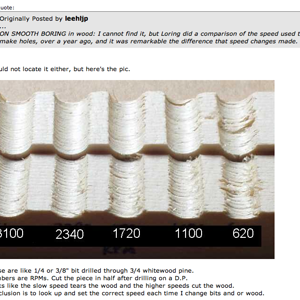HwlngMdMurdoch
Member
OK, so i picked up 2 stars and wavy stripes blanks for a project (bolt action) from Woodcraft. Supposed to be acrylic, but I'm not so, sure. I'll explain.
First blank, within 30 seconds of drilling (taking it slow), a big chuck chipped off. I'm thinking "ok, first time drilling something bigger, 3/8" than I'm used to", rookie mistake. 2nd blank went better, started with 7mm then the 3/8". Made it all the way to getting the tube glued and inserted. One side, perfect squaring(again taking it slow), opposite side, crack! even bigger piece broke off. Neither blank salvageable (used a reamer)
(used a reamer)
It looked totally different from my other acrylics, almost looked like resin.
So, what did I do wrong in my process?
I have 2 poly resin blanks waiting to be used, but I want to see if there's a difference in drilling and turning those as opposed to the acrylic(I've made one pen thus far with acrylic).
I know there's a little bit of a learning curve compared to wood, so I'm not going to let this little fail frustrate me (yet lol).
any tips/tricks/advice for a rookie?
First blank, within 30 seconds of drilling (taking it slow), a big chuck chipped off. I'm thinking "ok, first time drilling something bigger, 3/8" than I'm used to", rookie mistake. 2nd blank went better, started with 7mm then the 3/8". Made it all the way to getting the tube glued and inserted. One side, perfect squaring(again taking it slow), opposite side, crack! even bigger piece broke off. Neither blank salvageable
It looked totally different from my other acrylics, almost looked like resin.
So, what did I do wrong in my process?
I have 2 poly resin blanks waiting to be used, but I want to see if there's a difference in drilling and turning those as opposed to the acrylic(I've made one pen thus far with acrylic).
I know there's a little bit of a learning curve compared to wood, so I'm not going to let this little fail frustrate me (yet lol).
any tips/tricks/advice for a rookie?

